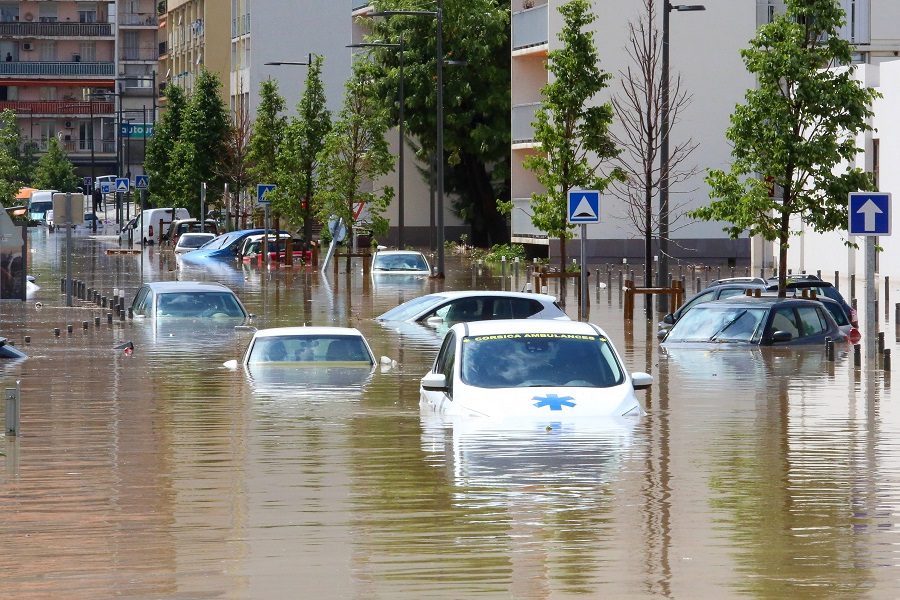Disaster management aims to mitigate the potential damage of a disaster, ensure timely and appropriate relief to victims, and enable effective and rapid recovery. These objectives require planned and effective rescue operations in the aftermath of such disasters. Therefore, various information about disaster impacts is needed to plan effective and immediate rescue operations. Nowadays, IoT can already provide huge help in terms of disaster management needs, such as spreading awareness and planning rescue operations.

IoT offers disruptive potential in the prevention, preparedness, response and recovery phases of disaster management, which we can look at below.
1. Prevention
IoT can change the game for disaster prevention in the following ways. Monitoring can be greatly facilitated using real-time sensor-based data. Examples include:
- Water level sensor
- Sensors for monitoring wildfires, tornadoes, earthquakes, storms and volcanic activity
- Vehicles using telematics
- Protect critical infrastructure with predictive maintenance
- Mitigating hazards by monitoring the environment using sensors for pollutants, including radioactive scenarios
- Enable early warning monitoring system
2. Preparation
IoT has the potential to simplify preparation:
- Use sensor technology to address real-time inventory and replenishment spare parts planning, as well as automated order processing
- Asset tracking and tracing
- Use advanced event processing to inform actions based on streaming sensor data, enabling predictive resource deployment
3. Response
IoT can facilitate response planning and action by:
- Vehicle tracking and GIS integration
- Using sensors to monitor the movement of key personnel
- Geofencing setup using NFC
- Achieve situational awareness and incident management through streaming data, unstructured data processing, predictive analytics, big data, advanced event processing and social media analytics
4. Recovery
IoT can be a powerful enabler of disaster recovery efforts and activities in the following ways:
- Using sensor technology to identify and verify beneficiaries
- Using smart cards and RFID for relief spending
- Create a virtual logistics network that enables hub operators and others to monitor traffic in and out of the hub in real time and facilitates communication between all parties involved.
Benefits of IoT in Disaster Management
After looking at all the ways IoT can be used for disaster management, we should also look at its benefits. Here are the main benefits of applying IoT in disaster management:
- Agencies can gain clear visibility into operations through real-time visibility into data.
- Organizations can pull current and historical data from multiple sources; transforming it into quickly accessible, actionable insights to make faster, more informed decisions.
- It helps create a single, federated information center.
- Agencies can create an information hub that all parties – including government agencies, NGOs, infrastructure operators and communities – can contribute to and work from.
- It enhances collaboration and interoperability—it enables all stakeholders to work together more effectively by creating consistent and shareable workflows, processes, forms, and plans for disasters and emergencies of all kinds.
- Agencies benefit by leveraging cutting-edge technology—simplifying and optimizing all emergency management processes by leveraging the power of big data, cloud computing, mobile technology, and advanced, intuitive analytics.
Resuma
The use of sensors, M2M communications, and other IoT tools makes it easier to recover from losses caused by disasters and preparedness. Recent examples of disasters are the coronavirus pandemic, Amazon rainforest fires and Australian bushfires. A pandemic is unprecedented, however, the latter two examples are disasters that occur regularly and therefore could be prevented through the use of sensors capable of sensing sudden increases in temperature.
So, this is the role of IoT in the entire disaster management process. This article may have cleared people’s doubts about the use of technology in our lives. Not just small tasks but big tasks like disaster management also require the help of technology. The Internet of Things is one such progressive technology that can make life better.
Palabras clave: rtu equipment